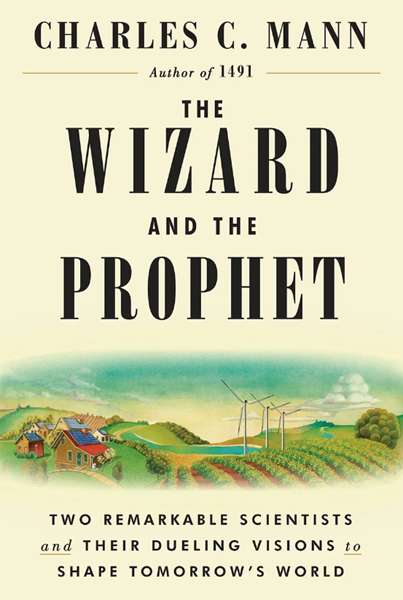 The popular conception of military history – indeed, the conception sometimes shared even by other historians – is that it is fundamentally a field about charting the course of armies, describing “great battles” and praising the “strategic genius” of this or that “great general”. One of the more obvious examples of this assumption – and the contempt it brings – comes out of the popular CrashCourse Youtube series. When asked by their audience to cover military history related to their coverage of the American Civil War, the response was this video listing battles and reflecting on the pointless of the exercise, as if a list of battles was all that military history was (the same series would later say that military historians don’t talk about about food, a truly baffling statement given the important of logistics studies to the field; certainly in my own subfield, military historians tend to talk about food more than any other kind of historian except for dedicated food historians).
The popular conception of military history – indeed, the conception sometimes shared even by other historians – is that it is fundamentally a field about charting the course of armies, describing “great battles” and praising the “strategic genius” of this or that “great general”. One of the more obvious examples of this assumption – and the contempt it brings – comes out of the popular CrashCourse Youtube series. When asked by their audience to cover military history related to their coverage of the American Civil War, the response was this video listing battles and reflecting on the pointless of the exercise, as if a list of battles was all that military history was (the same series would later say that military historians don’t talk about about food, a truly baffling statement given the important of logistics studies to the field; certainly in my own subfield, military historians tend to talk about food more than any other kind of historian except for dedicated food historians).
The term for works of history in this narrow mold – all battles, campaigns and generals – is “drums and trumpets” history, a term generally used derisively. The study of battles and campaigns emerged initially as a form of training for literate aristocrats preparing to be officers and generals; it is little surprise that they focused on aristocratic leadership as the primary cause for success or failure. Consequently, the old “drums and trumpets” histories also had a tendency to glory in war and to glorify commanders for their “genius” although this was by no means universal and works of history on conflict as far back as Thucydides and Herodotus (which is to say, as far back as there have been any) have reflected on the destructiveness and tragedy of war. But military history, like any field, matured over time; I should note that it is hardly the only field of history to have less respectable roots in its quite recent past. Nevertheless, as the field matured and moved beyond military aristocrats working to emulate older, more successful military aristocrats into a field of scholarly inquiry (still often motivated by the very real concern that officers and political leaders be prepared to lead in the event of conflict) the field has become far more sophisticated and its gaze has broadened to include not merely non-aristocratic soldiers, but non-soldiers more generally.
Instead of the “great generals” orientation of “drums and trumpets”, the field has moved in the direction of three major analytical lenses, laid out quite ably by Jeremy Black in “Military Organisations and Military Charge in Historical Perspective” (JMH, 1998). He sets out the three basic lenses as technological, social and organizational, which speak to both the questions being asked of the historical evidence but also the answers that are likely to be provided. I should note that these lenses are mostly (though not entirely) about academic military history; much of the amateur work that is done is still very much “drums and trumpets” (as is the occasional deeply frustrating book from some older historians we need not discuss here), although that is of course not to say that there isn’t good military history being written by amateurs or that all good military history narrowly follows these schools. This is a classification system, not a straight-jacket and I am giving it here because it is a useful way to present the complexity and sophistication of the field as it is, rather than how it is imagined by those who do not engage with it.
[…]
The technological approach is perhaps the least in fashion these days, but Geoffery Parker’s The Military Revolution (2nd ed., 1996) provides an almost pure example of the lens. This approach tends to see changing technology – not merely military technologies, but often also civilian technologies – as the main motivator of military change (and also success or failure for states caught in conflict against a technological gradient). Consequently, historians with this focus are often asking questions about how technologies developed, why they developed in certain places, and what their impacts were. Another good example of the field, for instance, is the debate about the impact of rifled muskets in the American Civil War. While there has been a real drift away from seeing technologies themselves as decisive on their own (and thus a drift away from mostly “pure” technological military history) in recent decades, this sort of history is very often paired with the others, looking at the ways that social structures, organizational structures and technologies interact.
Perhaps the most popular lens for military historians these days is the social one, which used to go by the “new military history” (decades ago – it was the standard form even back in the 1990s) but by this point comprises probably the bulk of academic work on military history. In its narrow sense, the social perspective of military history seeks to understand the army (or navy or other service branch) as an extension of the society that created it. We have, you may note, done a bit of that here. Rather than understanding the army as a pure instrument of a general’s “genius” it imagines it as a socially embedded institution – which is fancy historian speech for an institution that, because it crops up out of a society, cannot help but share that society’s structures, values and assumptions.
The broader version of this lens often now goes under the moniker “war and society”. While the narrow version of social military history might be very focused on how the structure of a society influences the performance of the militaries that created it, the “war and society” lens turns that focus into a two-way street, looking at both how societies shape armies, but also how armies shape societies. This is both the lens where you will find inspection of the impacts of conflict on the civilian population (for instance, the study of trauma among survivors of conflict or genocide, something we got just a bit with our brief touch on child soldiers) and also the way that military institutions shape civilian life at peace. This is the super-category for discussing, for instance, how conflict plays a role in state formation, or how highly militarized societies (like Rome, for instance) are reshaped by the fact of processing entire generations through their military. The “war and society” lens is almost infinitely broad (something occasionally complained about), but that broadness can be very useful to chart the ways that conflict’s impacts ripple out through a society.
Finally, the youngest of Black’s categories is organizational military history. If social military history (especially of the war and society kind) understands a military as deeply embedded in a broader society, organizational military history generally seeks to interrogate that military as a society to itself, with its own hierarchy, organizational structures and values. Often this is framed in terms of discussions of “organizational culture” (sometimes in the military context rendered as “strategic culture”) or “doctrine” as ways of getting at the patterns of thought and human interaction which typify and shape a given military. Isabel Hull’s Absolute Destruction: Military Culture and the Practices of War in Imperial Germany (2006) is a good example of this kind of military history.
Of course these three lenses are by no means mutually exclusive. These days they are very often used in conjunction with each other (last week’s recommendation, Parshall and Tully’s Shattered Sword (2007) is actually an excellent example of these three approaches being wielded together, as the argument finds technological explanations – at certain points, the options available to commanders in the battle were simply constrained by their available technology and equipment – and social explanations – certain cultural patterns particular to 1940s Japan made, for instance, communication of important information difficult – and organizational explanations – most notably flawed doctrine – to explain the battle).
Inside of these lenses, you will see historians using all of the tools and methodological frameworks common in history: you’ll see microhistories (for instance, someone tracing the experience of a single small unit through a larger conflict) or macrohistories (e.g. Azar Gat, War in Human Civilization (2008)), gender history (especially since what a society views as a “good soldier” is often deeply wrapped up in how it views gender), intellectual history, environmental history (Chase Firearms (2010) does a fair bit of this from the environment’s-effect-on-warfare direction), economic history (uh … almost everything I do?) and so on.
In short, these days the field of military history, as practiced by academic military historians, contains just as much sophistication in approach as history more broadly. And it benefits by also being adjacent to or in conversation with entire other fields: military historians will tend (depending on the period they work in) to interact a lot with anthropologists, archaeologists, and political scientists. We also tend to interact a lot with what we might term the “military science” literature of strategic thinking, leadership and policy-making, often in the form of critical observers (there is often, for instance, a bit of predictable tension between political scientists and historians, especially military historians, as the former want to make large data-driven claims that can serve as the basis of policy and the later raise objections to those claims; this is, I think, on the whole a beneficial interaction for everyone involved, even if I have obviously picked my side of it).
Bret Devereaux, “Collections: Why Military History?”, A Collection of Unmitigated Pedantry, 2020-11-13.











